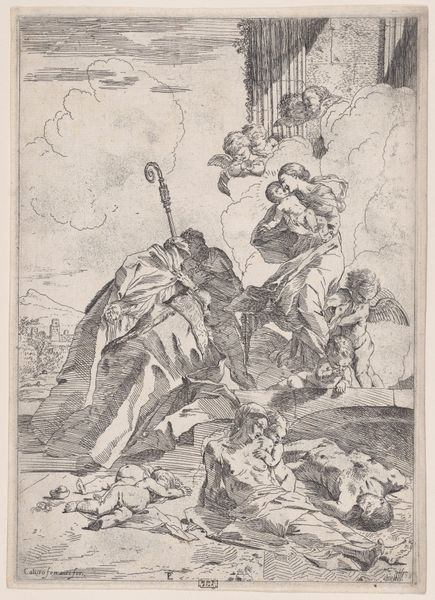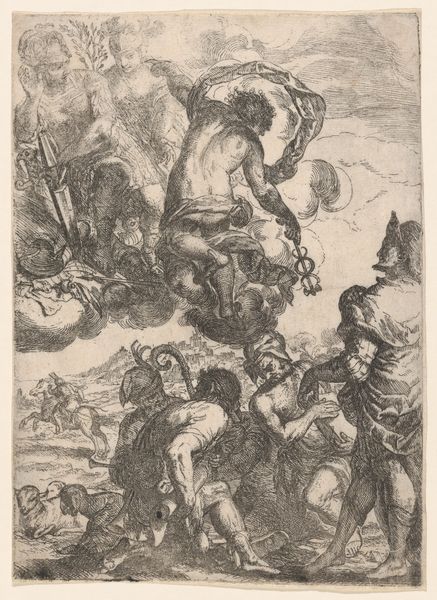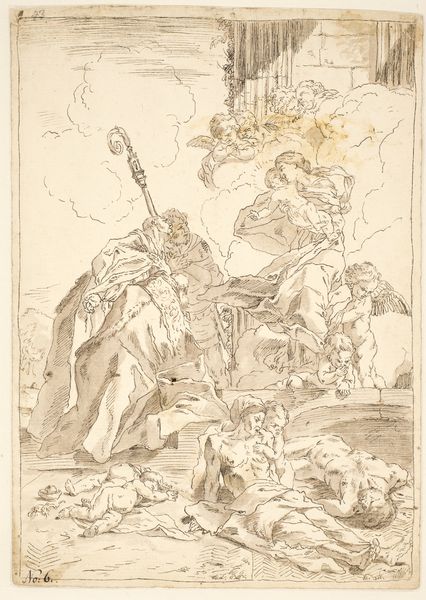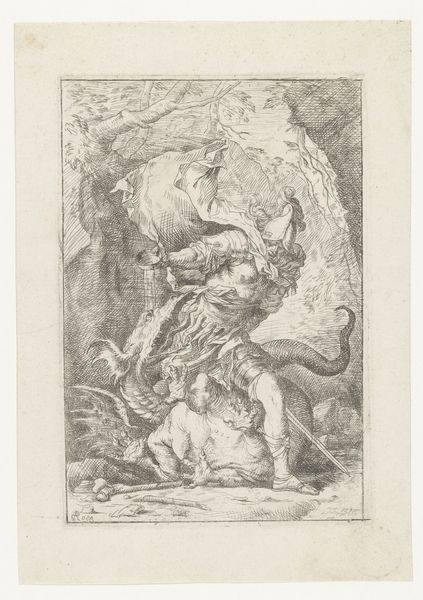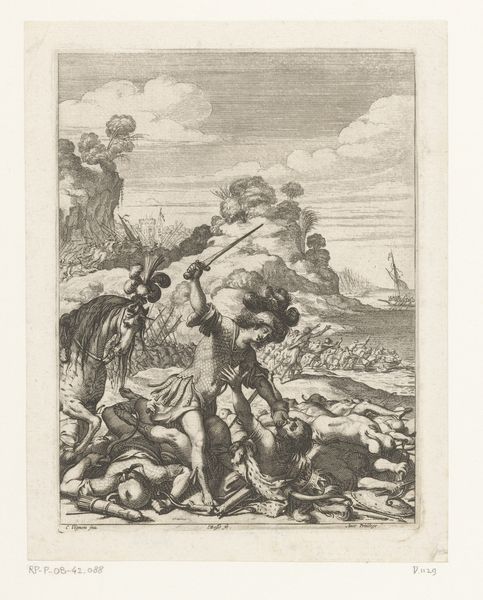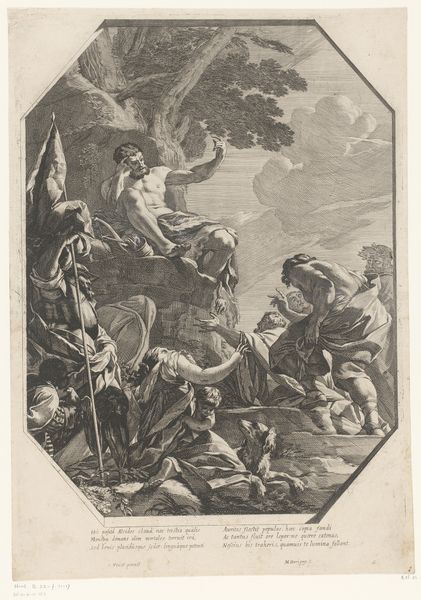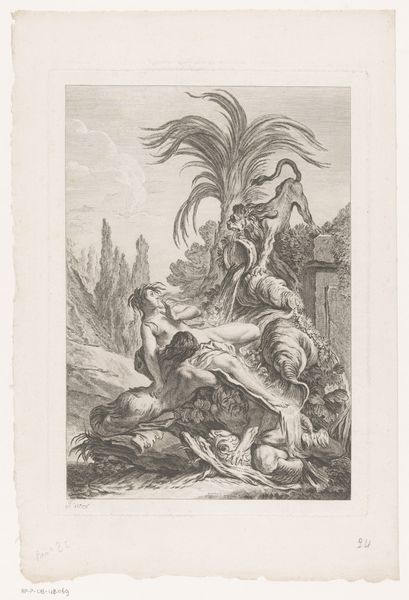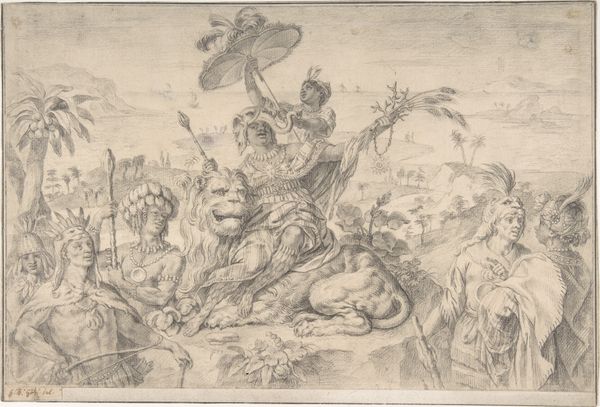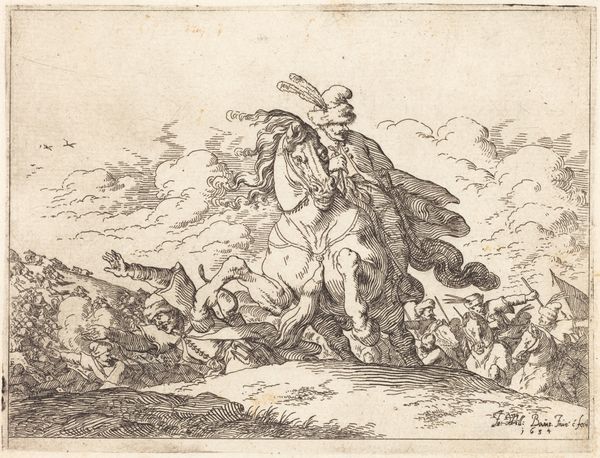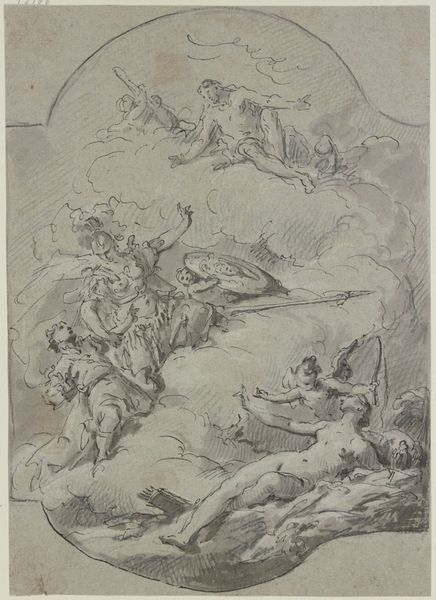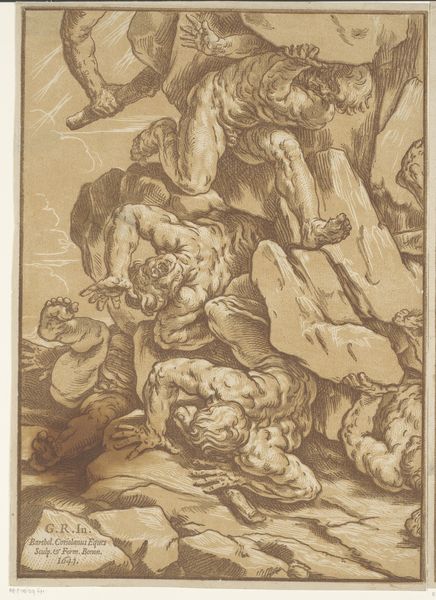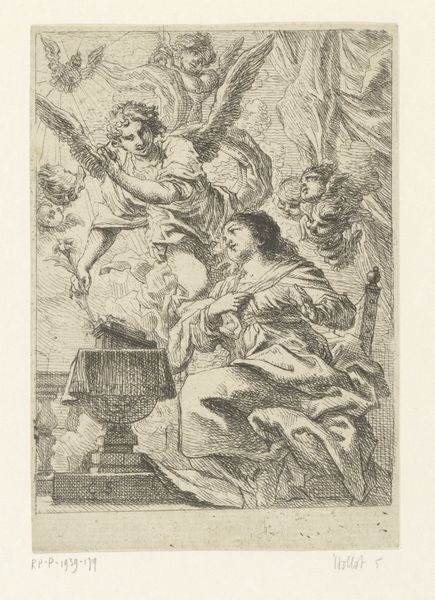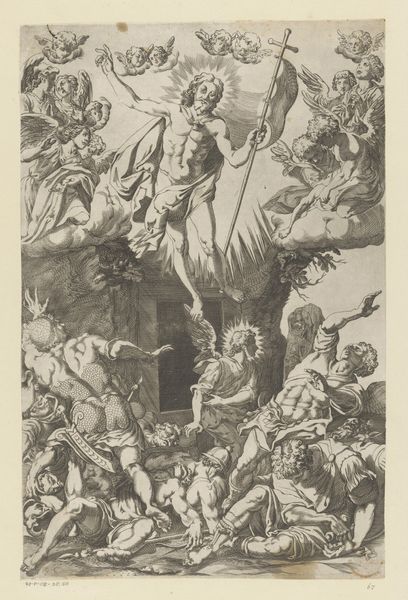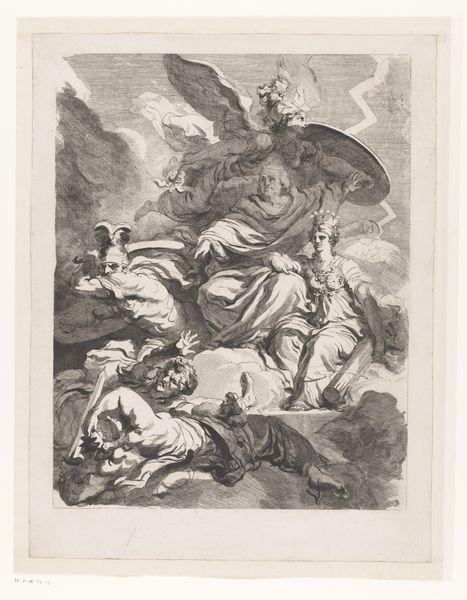
Three Lucchese saints Sts Nicholas Tolentino, Nicholas of Bari interceding with the Virgin for the victims of the plague 1650 - 1700
0:00
0:00
drawing, print, intaglio
#
drawing
#
baroque
# print
#
intaglio
#
history-painting
Dimensions: sheet: 10 9/16 x 7 3/16 in. (26.8 x 18.2 cm)
Copyright: Public Domain
Editor: Here we have an intaglio print, "Three Lucchese Saints Sts Nicholas Tolentino, Nicholas of Bari interceding with the Virgin for the victims of the plague" made sometime between 1650 and 1700. What strikes me most is the emotional contrast: we see heavenly figures juxtaposed with earthly suffering. How do you interpret this work? Curator: This image resonates deeply with its time. Notice how the plague, represented by the fallen figures, invades everyday life. Yet, it's not a scene of utter despair, is it? We have Nicholas of Tolentino and Nicholas of Bari imploring the Virgin Mary, a symbol of compassion and divine intervention. Editor: So, the plague isn't just a disease; it’s a sign? Curator: Precisely. The Baroque era was a period of great religious intensity, of wars and great class disparities. People turned to the saints for intercession, investing them with almost totemic significance. This image becomes a record of that desperation and of the deep faith held to overcome social and health cataclysms. Have you noticed the putti? They seem detached and yet part of the composition... Editor: I see, they represent innocence, untouched by the tragedy. And it feels as if the artist sought to depict hope even in such a dark moment through the image of Virgin Mary interceding on our behalf. Curator: Yes, the cultural memory encoded here is quite potent. This print serves as both a historical document and a reminder of our ongoing need for hope amidst adversity. It triggers collective beliefs while documenting a traumatic collective experience. Editor: It’s fascinating how so much cultural information is embedded in one single print. Thanks! Curator: My pleasure! Exploring these visual symbols unlocks a whole new understanding of the past, doesn't it?
Comments
No comments
Be the first to comment and join the conversation on the ultimate creative platform.
